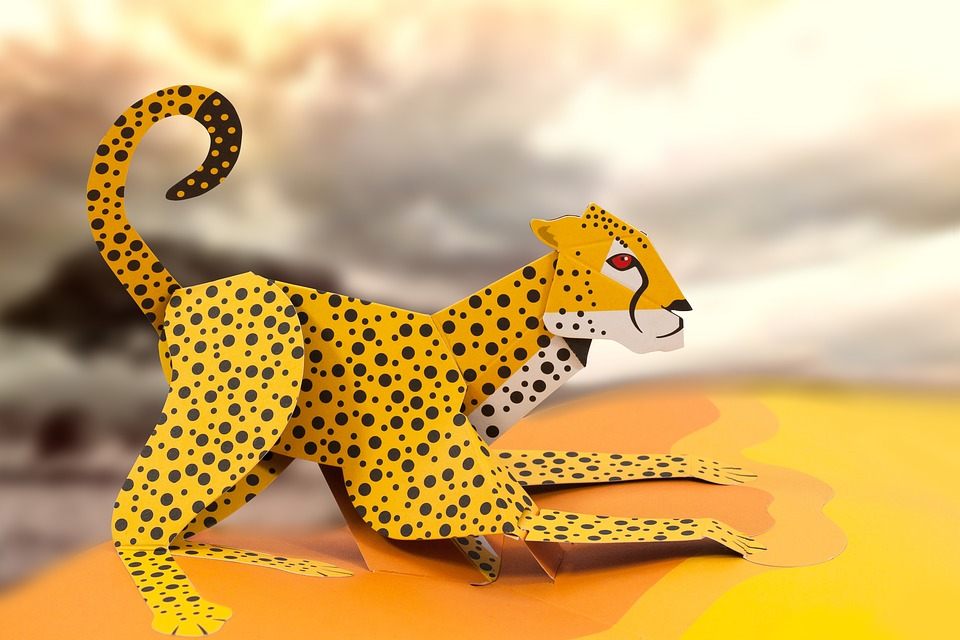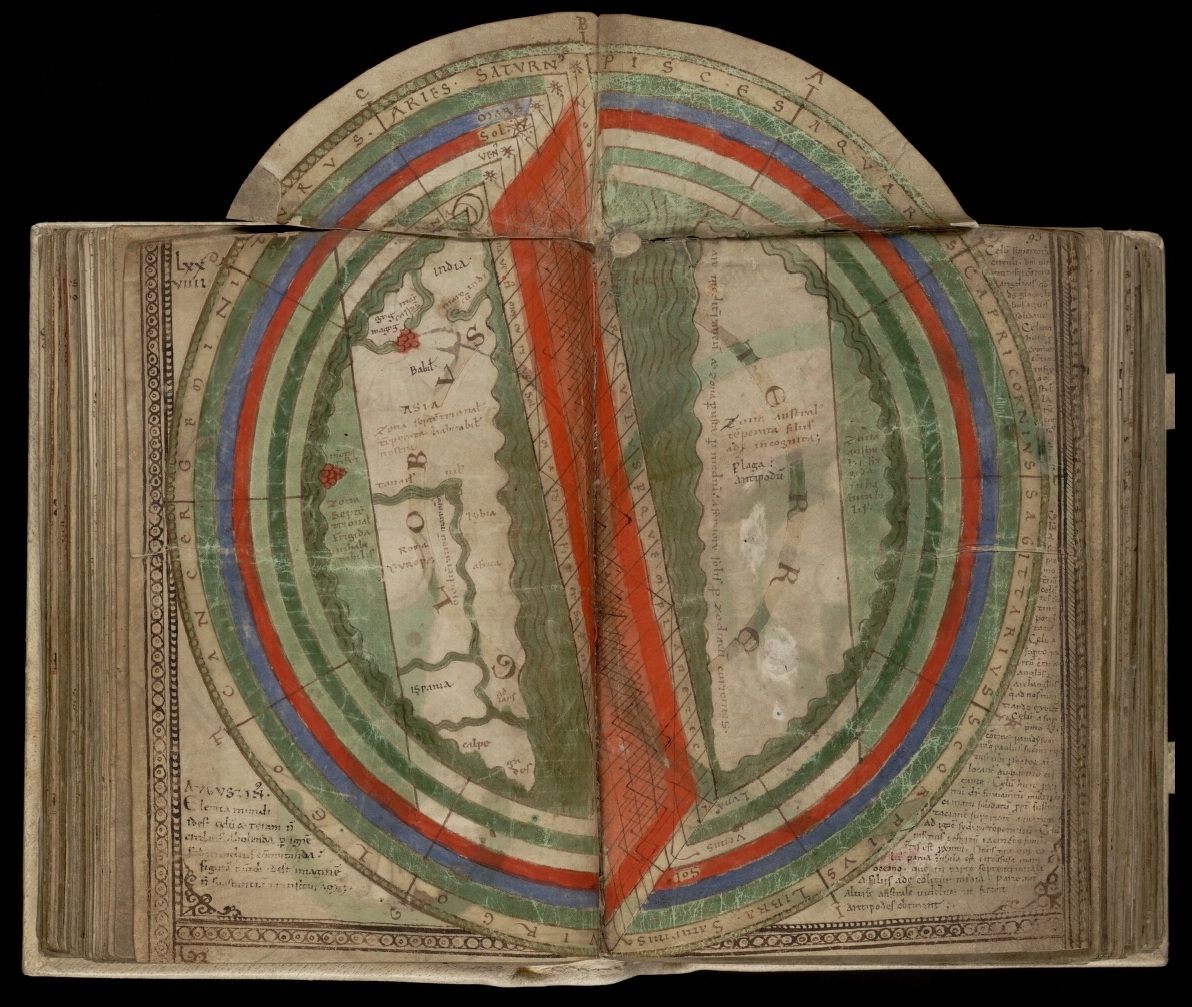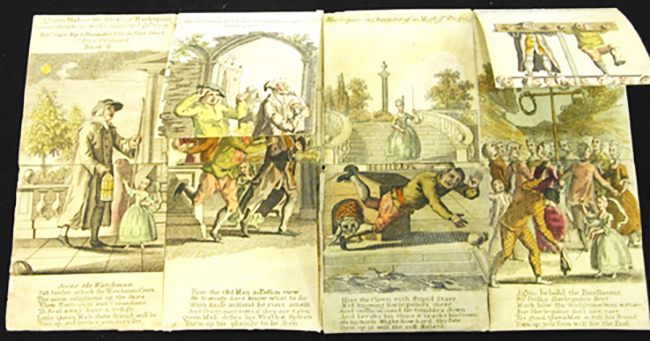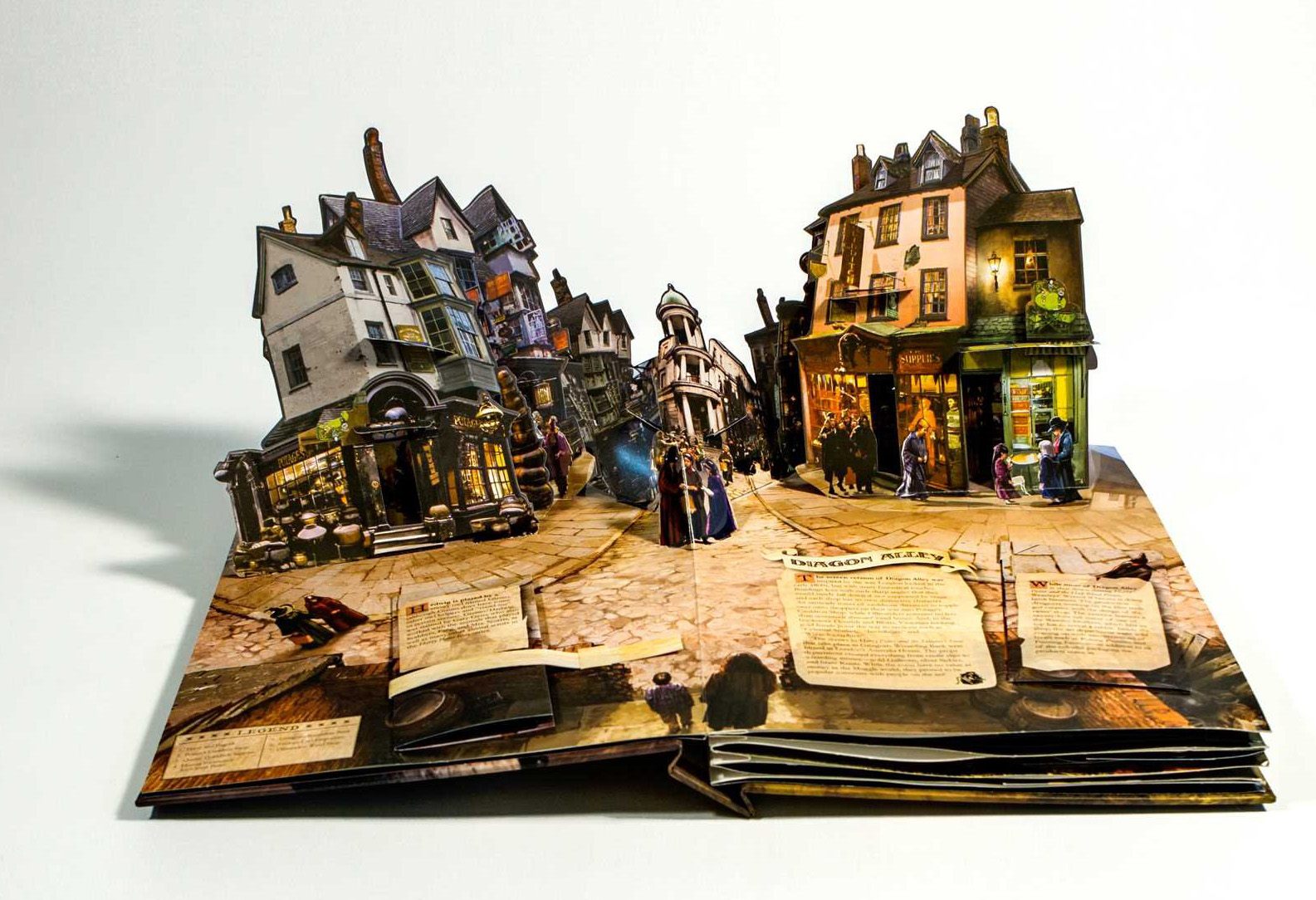The History of Movable Paper in One Massive, 9,000-Book Collection
Pop-ups, harlequinades, and Meggendorfers, oh my!

Ellen G.K. Rubin never saw a pop-up book as she was growing up, so when she bought two for her young sons in the 1980s, she was amazed. “I was blown away, probably much more than they were,” she says. Those two books—one about dinosaurs, another about vehicles—set off an obsession. Today she has a collection of some 9,000 books, as well as countless postcards and advertisements, that pop up or move in some way—hence her nickname, “The Popuplady.”
Pop-up books are just one type of what are known as movable books, or books that in some way move to illustrate information or a story. Rubin has always employed a broad definition for her collection. “If you have to manipulate it in order to understand the illustration, or the story, or the text, or whatever it is that the writer is trying to convey,” she says, “then it is movable and fits into the criteria for my collection.” All the books and ephemera that fit her criteria reside in a purpose-built library in her home just north of New York City. It is outfitted with special glass and wood shelves that eliminate sunlight and gases that can damage paper. Rubin handles the books with care, just as many of us were taught as children; she makes sure to not squeeze them shut, and storing some flat in drawers. Temperature control is particularly important. “If the glue dries, they pop off instead of up,” she says. All these measures aren’t really in place to protect the oldest books in Rubin’s collection, which date back to 1547. “Keeping older books in good condition is not as difficult,” Rubin says. Their pages were usually made with rags, which makes them more durable. Newer books are made of paper and are more likely to deteriorate with time.

Pop-up books are mostly closely associated with children today, but that’s a relatively recent development. Before the 17th century, Rubin says, movable books were used for texts on medicine and astronomy. “Movable books, as far as we know, started in the 12th century,” she says. The earliest example is a manuscript dating to 1121, titled Liber Floridus, that illustrates the orbits of the planets around the Earth. The top part of the page folds up, a gatefold, to reveal the complete illustration.
“The first movable that we say was for children,” Rubin says, “was the turn-up book, or the harlequinade.” Those were first printed around 1750. “You read it by looking at an image and then half of that image turns up. And what’s underneath is integrated with the part that’s not turned up. The text changes and the story changes with the change of the image.”

The transition from harlequinades to pop-up books started in the late 1800s. In the beginning, these books were usually string-activated. “When you opened the book, a string pulled the pop-up up, or you pulled down a flap and then the whole thing popped up. So they did pop up, but they weren’t self-erecting,” Rubin explains. Self-erecting books—these are what we think of as pop-ups today—in which the act of turning the page is enough to raise a paper structure, first appeared in the 1920s. A copyright for the term “pop-up” for a book was filed in 1932 by Blue Ribbon Press.
More than 1,000* of the books in Rubin’s collection were created by one person: Czech artist Vojtěch Kubašta. Kubašta was trained as an architect in Prague in the 1930s, and went on to illustrate and publish pop-up books in the 1950s and ’60s. “The man was devilishly prolific. I am constantly finding new things,” Rubin says. “No one could ever have everything.” More than 10 million copies of his books have been sold and his works have been translated into 27* different languages. Rubin says there are also subtle changes in the art between editions, making his work a bit of a nightmare for collectors. The changes can be as minor as six flowers on the cover of one edition of his Sleeping Beauty, compared with three flowers on another edition. “I’m not going through all my books, I don’t even want to know that he made these changes. He is just infuriating,” she says.
Kubašta is one of several notable artists in the long history of movable books, including the man widely considered the foremost genius of the form, Lothar Meggendorfer. Meggendorfer didn’t make pop-ups, but his movable books were exceptional. “He used a single rivet and one pull tab, and there are many things that move on the page with that one movable [element].” His books, published in the late 19th century, weren’t just for kids. “This was family entertainment, to sit around and read his books and move the tabs and have fun things or serious things move on the page.”
An award named for Meggendorfer is given once every two years by the Movable Book Society. The award is for paper engineers, the craftspeople who create the movable pieces and work with illustrators and printers to bring pop-ups to life. According to Bruce Foster, a paper engineer based in Houston, Texas, there are only about 75 to 100 paper engineers worldwide, and most popular books are produced by the same 10 or 15 individuals. Foster himself is a prolific paper engineer, and creates a range of pop-up books for publishers, filmmakers, and advertisers.
Foster studied fine art in college and worked as a graphic designer before he became a paper engineer. His first experience with the form was an advertisement for juice. “I was 34 years old, and I’d seen one pop-up in my entire life. I had never even opened a pop-up book,” Foster says. He soon found National Geographic pop-up books from the 1960s and ’70s at bookstores and performed “book autopsies.” “I would slice them apart,” he says. “I’d figure out exactly how they made those [pop-ups] happen, and I started emulating.”

Today, whether the project is a kids’ book, or the opening sequence of Disney’s 2007 film Enchanted, Foster’s process is the same. “The first phase of any project is strictly playtime,” he says. “I play around a lot, work out these different mechanisms, putting them all together, experimenting.” Once the pop-up is designed, Foster translates that to computer files that lay out the placement of cuts, folds, and illustrations. The files then go to a printer—usually in Asia, where labor costs are lower for the hand-assembly that each book requires.
“If paper engineers are puppet makers,” says Rubin, “they hand the strings to the reader and the reader becomes the puppeteer.” And for kids, playing puppeteer is second nature. “They so quickly learn, just like how quickly they learn to swipe on a screen. They learn to run their hand over the book looking for tabs or flaps. Once they see this can happen, they look for it.”
*Correction: This post previously overstated the size of Rubin’s collection. Rubin owns 1,000 Kubasta books, not 2,000, and his work has been translated into 27 languages, not 40.











Follow us on Twitter to get the latest on the world's hidden wonders.
Like us on Facebook to get the latest on the world's hidden wonders.
Follow us on Twitter Like us on Facebook